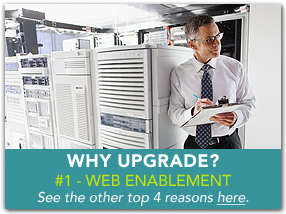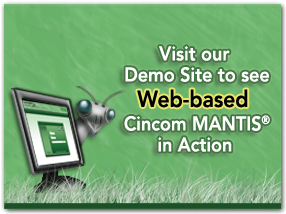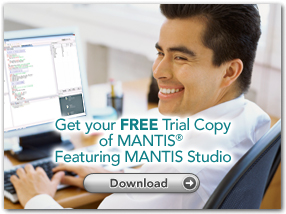Application Development Terms
Ajax – Ajax (shorthand for Asynchronous JavaScript and XML) is a group of interrelated web development techniques used on the client-side to create interactive web applications. With Ajax, web applications can retrieve data from the server asynchronously in the background without interfering with the display and behavior of the existing page.
application development – The term application development is often used to refer to the activity of computer programming, which is the process of writing and maintaining the source code, whereas the broader sense of the term includes all that is involved between the conception of the desired application through to the final manifestation of that application. Therefore, application development may include research, new development, modification, reuse, re-engineering, maintenance, or any other activities that result in the finished application.
application maintenance – Application maintenance in software engineering is the modification of an application after delivery to correct faults, to improve performance or other attributes.
application portability – Application portability is the ability to develop applications on one platform and then deploy those applications on another platform, either similar or dissimilar. Applications developed with MANTIS and AD/Advantage are portable across a wide range of platforms and, in most cases, require no changes.
application wizard – An application wizard is a user interface element that presents a user with a sequence of dialog boxes that lead the user through a series of well-defined steps. Tasks that are complex, infrequently performed, or unfamiliar may be easier to perform using a wizard. MANTIS Studio provides templates and wizards to aid in the development process, including advanced context-sensitive editors with color coding and highlighting.
business applications – A business application is generally any application or software program that helps a business increase productivity or measure their productivity. The term covers a large variation of uses within the business environment.
business process management (BPM) – the discipline of managing processes (rather than tasks) as a means of improving business performance.
development life cycle – The development life cycle consists of the processes and procedures involved in the creation of a program, system or product. This usually refers to the creation of software or IT products. MANTIS addresses the entire application development life cycle.
Eclipse – Eclipse is an open source community that provides a universal toolset for application development. It is comprised of extensible frameworks, tools and runtimes for building, deploying and managing software across the entire product lifecycle. Cincom has extended this open source IDE by adding plug-in support for MANTIS, our complete beginning-to-end rapid application development system.
Interactive Development Environment (IDE) – An integrated development environment (IDE) also known as integrated design environment or integrated debugging environment is a software application that provides comprehensive facilities to computer programmers for software development.
mainframe application modernization – Ways to update your mainframe data to interact with the web and modern client applications.
mobile business applications – a software application designed to run on smartphones, tablets, and other mobile devices.
object oriented programming – Object-oriented programming (OOP) is a programming paradigm that uses “objects” – data structures consisting of data fields and methods together with their interactions – to design applications and computer programs. Programming techniques may include features such as data abstraction, encapsulation, modularity, polymorphism, and inheritance.
open applications – In general, open applications refer to any program whose source code is made available for use or modification as users or other developers see fit. Open source software is usually developed as a public collaboration and made freely available. MANTIS XML uses XML and other open standards to provide web access to MANTIS.
open source – Open source describes practices in production and development that promote access to the end product’s source materials. Opening the source code enabled a self-enhancing diversity of production models, communication paths, and interactive communities. Subsequently, a new, three-word phrase “open source software” was born to describe the environment that the new copyright, licensing, domain and consumer issues created.
portable applications – A portable application (portable app) is a computer software program that is able to run independently without the need to install files to the system it is run upon. Portable apps should not be confused with software portability where software allows its source code to be compiled for different computing platforms. Portable applications can be run on any computer system with which they are compatible but typically require a specific operating system such as Microsoft Windows XP or above, UNIX, certain version of a Linux, etc.
product lifecycle – See development lifecycle.
programming language – A programming language is an artificial language designed to express computations that can be performed by a machine, particularly a computer. Programming languages can be used to create programs that control the behavior of a machine, to express algorithms precisely, or as a mode of human communication. MANTIS, with its high-level programming language, is a comprehensive business application development system that is designed to increase productivity in all areas of application development—from initial design through production.
prototyping – A true prototyping system creates a scale model which provides information about a system’s actual interaction with its intended environment. The aim of prototyping is to determine whether a system design meets true user needs and to accelerate the learning process. However, prototyping is feasible only if it is relatively fast, inexpensive and flexible. MANTIS offers prototyping features for efficient system design.
rapid application development (older terminology) – Rapid application development (RAD) was the concept that products could be developed faster and of higher quality through an easy-to-use, full-function programming language, prototyping and early, reiterative user testing of designs, and the re-use of software components.
Rich Internet Application – A Rich Internet Application (RIA) is a web application that has many of the characteristics of desktop applications, typically delivered either by way of a site-specific browser, via a browser plug-in, independent sandboxes, or virtual machines.
service oriented architecture (SOA) – a design discipline that helps IT meet business demands.
software development – Software development is the development of a software product in a planned and structured process. This software could be produced for a variety of purposes – the three most common purposes are to meet specific needs of a specific client/business, to meet a perceived need of some set of potential users (the case with commercial and open source software), or for personal use (e.g. a scientist may write software to automate a mundane task).
web applications – In software engineering, a web application, or web-app, is an application that is accessed via the web over a network such as the Internet or an intranet. Web applications are popular due to the ability to update and maintain them on potentially thousands of client computers, without distributing and installing software. MANTIS XML not only enables you to develop new, web-based applications, it also allows you to web-enable your existing MANTIS applications with very little effort.




